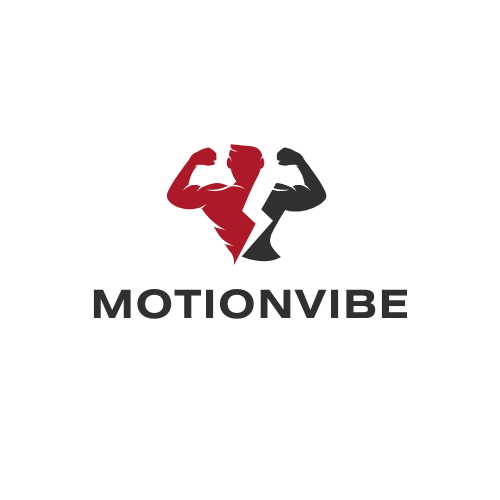When it comes to fitness, internal rotation exercises might not sound like the life of the party, but they’re the unsung heroes of mobility and strength. Picture this: your shoulders and hips are like a well-oiled machine, smoothly gliding through everyday movements. Without proper internal rotation, that machine can start to squeak and groan, leading to discomfort and injury. Who wants that?
Internal Rotation Exercises
Internal rotation exercises specifically target the shoulder and hip joints, enhancing stability and mobility. These movements encourage proper alignment by engaging the rotator cuff muscles in the shoulder, which contributes to better overall shoulder health. Rotating the hip internally helps balance the muscles around the joint, thus improving strength and flexibility.
Several benefits arise from incorporating these exercises into a fitness routine. Strengthening the internal rotators reduces the risk of injuries, especially during activities that require overhead movements. Improved range of motion decreases stiffness often associated with sedentary lifestyles.
Common exercises include the banded internal rotation and the lying internal rotation. The banded internal rotation utilizes resistance bands to provide load throughout the movement, allowing for controlled strength building. Lying internal rotation can be performed with a dumbbell to increase the challenge and develop endurance in the rotator cuff muscles.
Incorporating these exercises a few times each week offers noticeable improvements. Practicing these regularly not only increases functionality in daily activities but also enhances athletic performance. Internal rotation exercises, although sometimes overlooked, form a critical component of a well-rounded fitness regimen.
Benefits of Internal Rotation Exercises

Internal rotation exercises provide several crucial advantages, primarily focusing on improving joint function and athletic capability.
Improved Joint Mobility
Improving joint mobility occurs with the regular practice of internal rotation exercises. These movements enhance the range of motion in both the shoulders and hips, leading to increased flexibility. Engaging the rotator cuff muscles contributes to stabilizing the shoulder joint effectively. Furthermore, regular performance of these exercises can alleviate stiffness often caused by inactivity, allowing for smoother, more comfortable movements. Overall, enhanced mobility supports various daily activities and can lead to longer-term joint health.
Enhanced Athletic Performance
Enhanced athletic performance stems from incorporating internal rotation exercises into a fitness regime. Strengthening the rotator cuff ensures better control during overhead movements, crucial for athletes participating in sports like baseball and tennis. Improved hip mobility directly influences sprinting, jumping, and changing direction movements. Athletes often experience fewer injuries when maintaining strong, flexible joints. Ultimately, better stability in both the shoulders and hips strengthens overall performance, contributing to better outcomes in competitive environments.
Types of Internal Rotation Exercises
Internal rotation exercises come in various forms, each targeting specific aspects of shoulder and hip mobility. Their effectiveness relies on proper execution and consistent practice.
Seated Internal Rotation
Seated internal rotation involves sitting upright while engaging the core. This position emphasizes stability and control. He or she may perform this exercise using a dumbbell or body weight. The arm rests on the thigh for support during the movement. The individual then rotates the shoulder inward, maintaining a slow and steady motion. Regular practice strengthens the rotator cuff muscles, enhancing overall shoulder health and functionality.
Standing Internal Rotation
Standing internal rotation allows for improved balance and coordination. This variation often utilizes a cable machine or resistance bands. The participant stands with feet shoulder-width apart, holding the band in one hand while the other arm remains anchored at the side. The rotation occurs as the individual pulls the band toward their body. Completing this movement reinforces muscle engagement through the entire shoulder area, promoting strength and stability during dynamic movements.
Resistance Band Internal Rotation
Resistance band internal rotation offers adjustable resistance levels, catering to various fitness levels. The exercise begins with the individual anchoring one end of the band securely. He or she then stands perpendicular to the anchor point, holding the other end with the outer arm. Inward pulling of the band occurs while keeping the elbow close to the body, activating the rotator cuff. Consistent use of resistance bands cultivates endurance and strength, aiding in injury prevention and enhancing performance in daily activities.
Common Mistakes in Internal Rotation Exercises
Many individuals make mistakes during internal rotation exercises that can hinder their effectiveness and increase injury risk. Recognizing and correcting these errors is essential for maximizing benefits.
Incorrect Form
Many practitioners use improper form when performing internal rotation exercises. Misalignment of the shoulder or hip during movements can lead to unnecessary strain. Keeping the shoulder blade stable and down is crucial; failing to do so may involve incorrect muscle groups. When executing banded internal rotation, ensure the band remains taut throughout the motion. Improper range of motion can also compromise effectiveness. Pay attention to keeping your elbow close to the body, as moving it away reduces stability and control. Correct posture enhances engagement of the rotator cuff muscles and improves overall performance.
Neglecting Warm-Up
Many people overlook the importance of warming up before internal rotation exercises. A proper warm-up increases blood flow to the muscles and enhances joint mobility, making movements safer and more effective. Skipping this step can lead to tight or cold muscles, increasing the risk of injury. Performing dynamic stretches specifically targeting the shoulders and hips can prepare the body for exercise. Engaging in activities like arm circles or gentle hip rotations improves flexibility and readiness. Dedicate at least five to ten minutes to warm-up routines before starting complex exercises for optimal results.
Incorporating internal rotation exercises into a fitness routine is vital for maintaining optimal shoulder and hip health. These movements not only enhance mobility and strength but also play a significant role in injury prevention.
By targeting the rotator cuff and hip joints, individuals can improve their overall functionality in daily activities and athletic performance. Consistent practice of these exercises leads to greater range of motion and reduced stiffness, promoting smoother movement patterns.
Emphasizing proper form and warm-up routines ensures that these exercises yield the best results. With dedication and attention to technique, anyone can experience the long-term benefits of internal rotation exercises.

